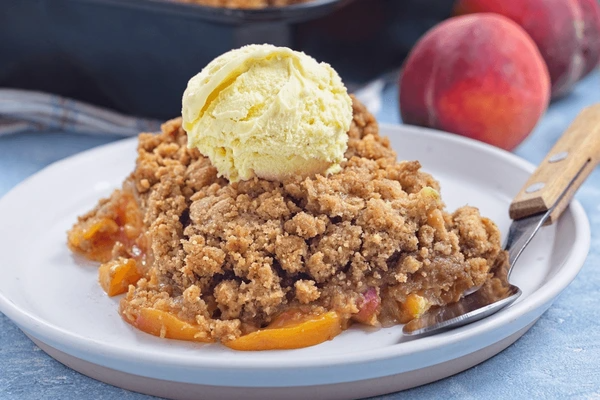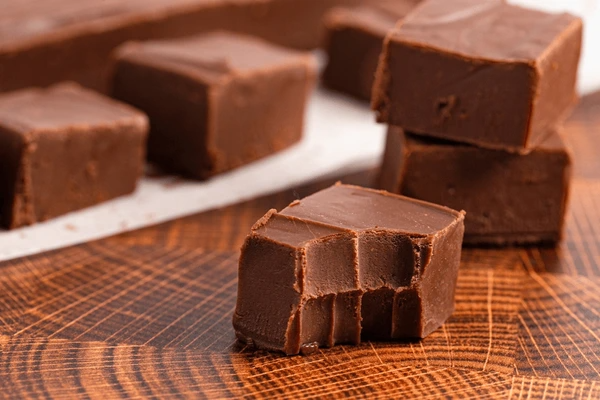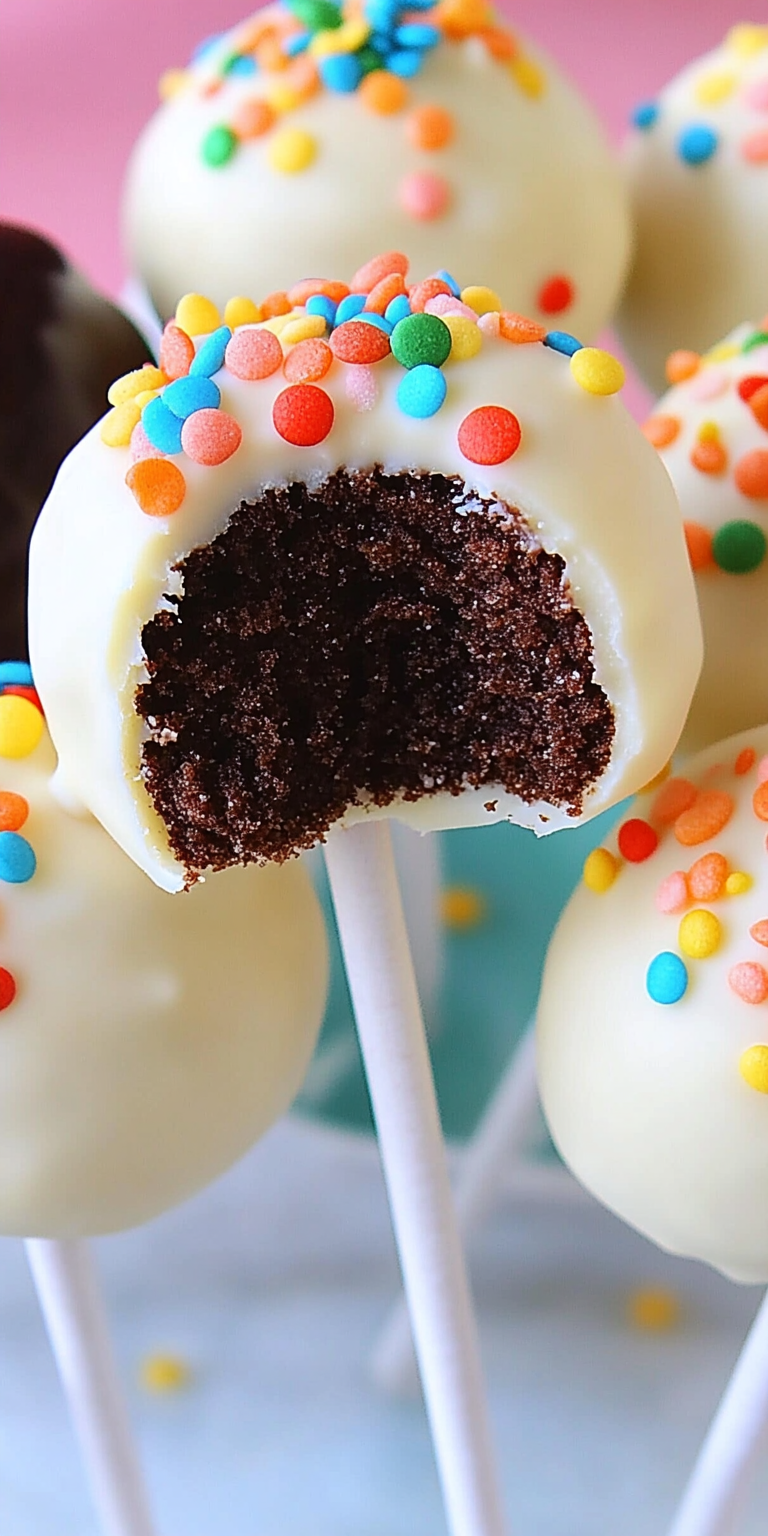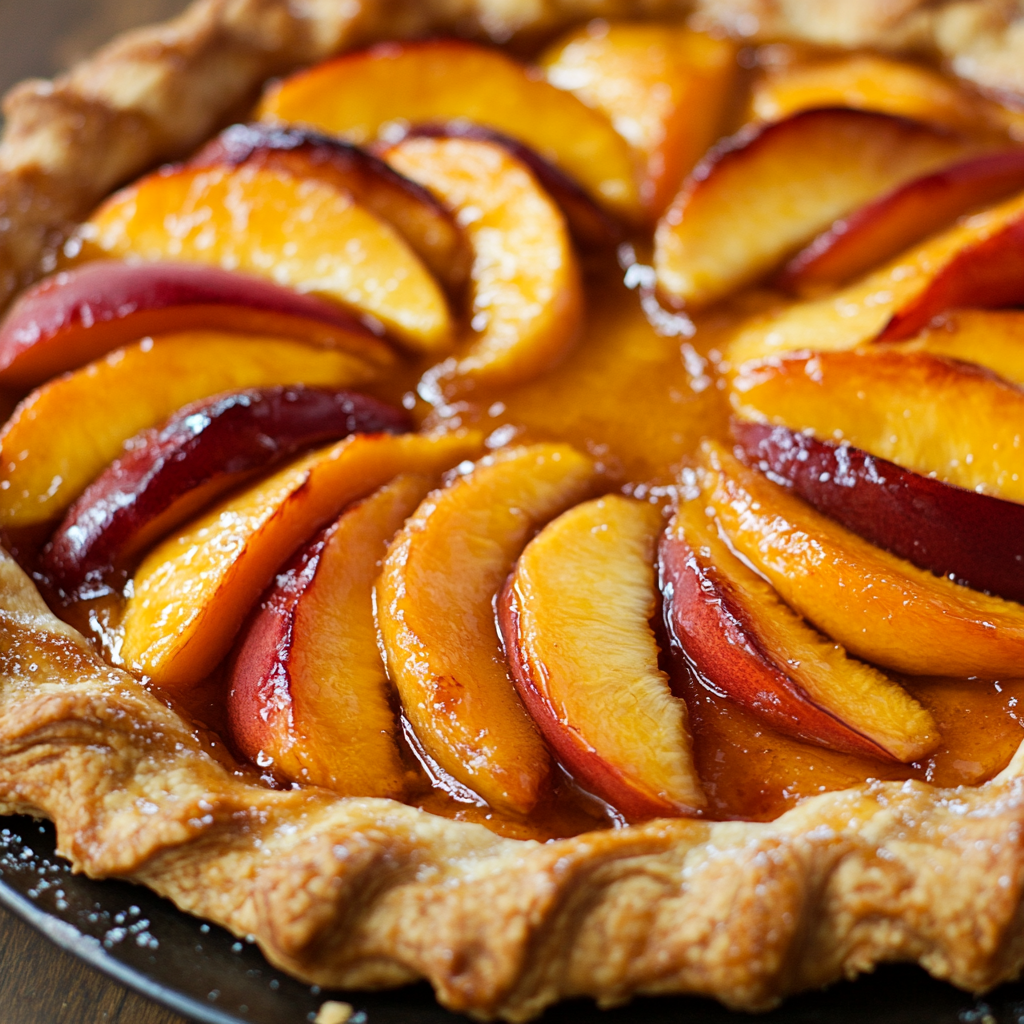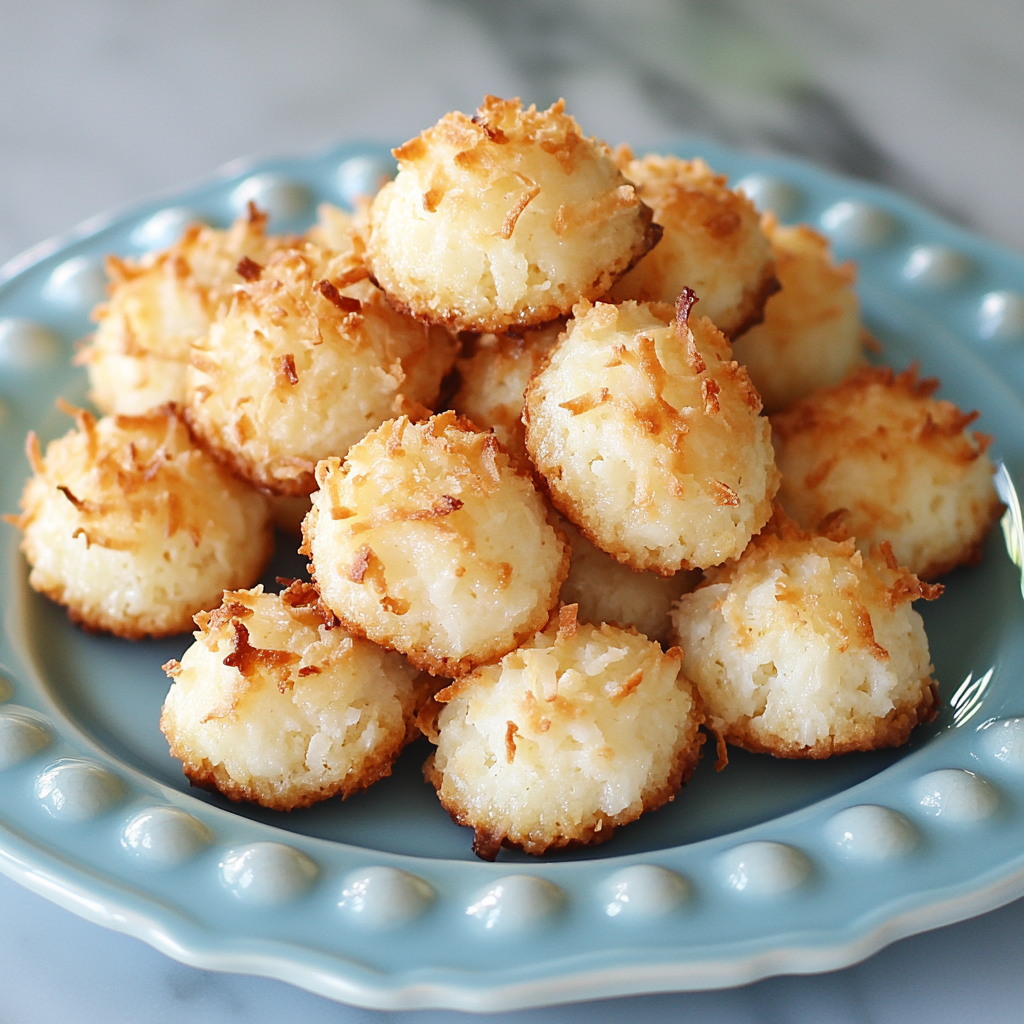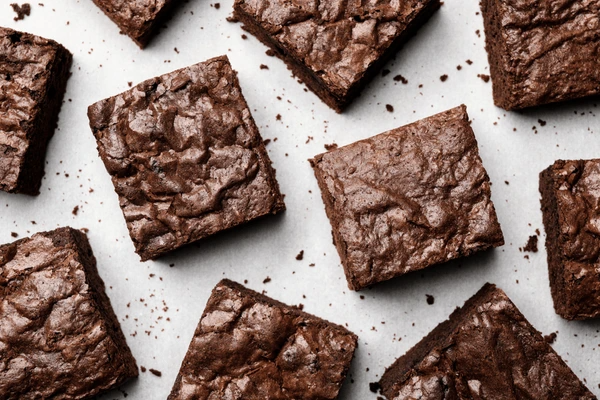Pavlova Recipe
A Perfect Pavlova Recipe promises an ethereal meringue dessert with a crisp, delicate shell and a fluffy, marshmallow-like center. Adorned with billows of whipped cream and fresh fruit, this classic Australasian treat is pure summer on a plate.
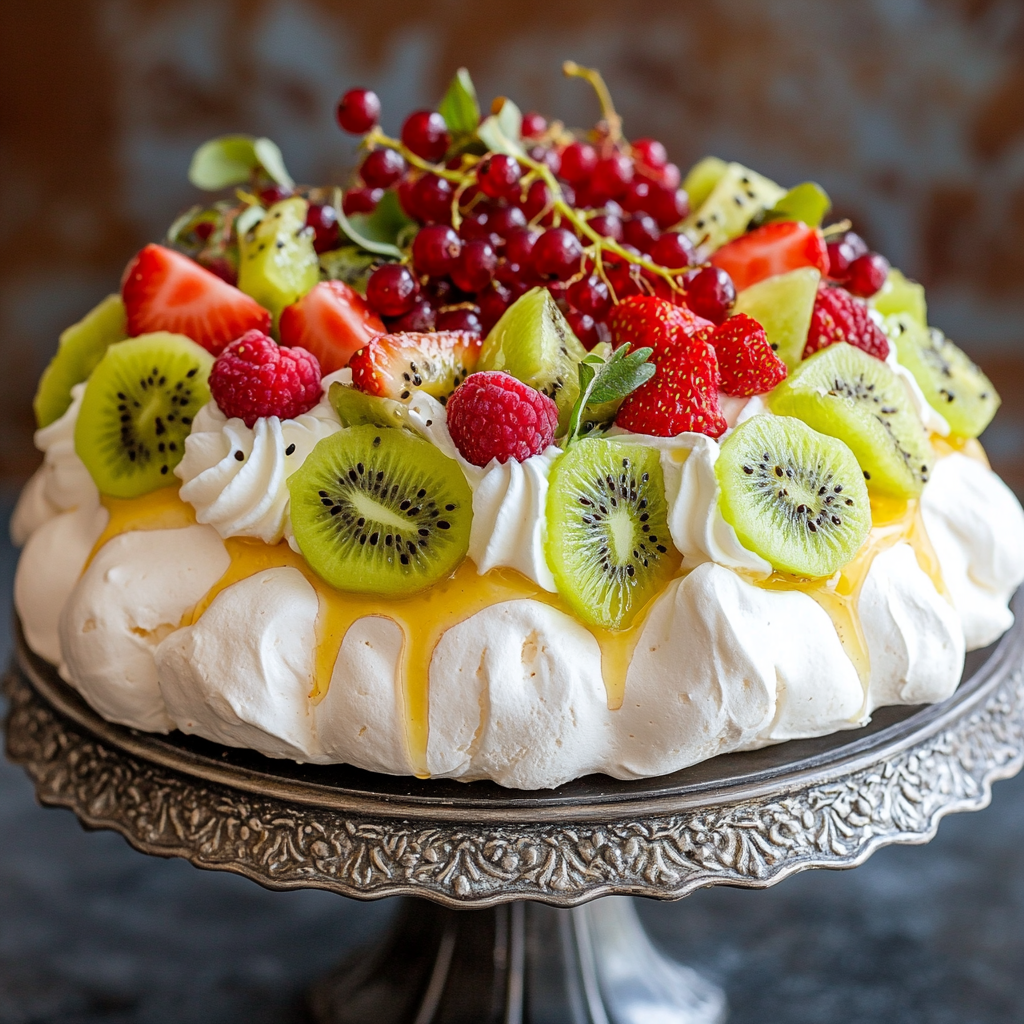
From festive gatherings to celebratory dinners, the Perfect Pavlova Recipe shines as an elegant centerpiece that’s surprisingly achievable with a few simple tricks and patience.
Essential Ingredients for the Perfect Pavlova Recipe
- Egg whites (225 g) – The foundation of a pavlova’s airy, marshmallow interior and crisp exterior.
- Caster sugar (370 g) – Dissolves easily for a glossy, stable meringue that holds its shape.
- Cornstarch (1½ tbsp) – Adds tenderness to the meringue’s soft center.
- White vinegar (2 tsp) – Stabilizes the egg whites, ensuring a firm yet fluffy texture.
- Whipping cream (1½ cup) – Lightly sweetened, it complements the pavlova’s sweetness with silky richness.
- Fresh fruits (kiwi, strawberries, mango, passion fruit) – Bright, juicy toppings that balance the sweet meringue with refreshing acidity.
How to Make It: Perfect Pavlova Recipe Steps
Begin by whisking room-temperature egg whites to soft peaks, then gradually add the caster sugar until the meringue turns glossy and thick, with no graininess. Gently fold in the cornstarch and vinegar to help set that signature crisp crust and marshmallow-like center.
Shape the meringue on parchment-lined baking paper into a beautiful circle, creating soft swirls and a slight dip in the center for the toppings. Bake low and slow, then let it cool undisturbed in the oven to prevent cracks. Just before serving, whip the cream to pillowy peaks, spoon it over the pavlova, and crown with vibrant slices of kiwi, strawberries, mango, and a drizzle of passion fruit pulp or lemon curd.
Tips & Variations to Perfect Your Pavlova
Humidity is a pavlova’s biggest foe. Bake on a dry day, and ensure bowls and utensils are scrupulously clean. For a citrusy twist, fold in a touch of grated lemon zest for a subtle zing. If tropical fruit isn’t your thing, try a berry medley or stone fruits like peaches or cherries. For extra drama, garnish with edible flowers or toasted coconut.
To avoid deflation, never open the oven door while baking. Cooling the pavlova slowly inside the oven helps it hold its beautiful shape and prevents large cracks.
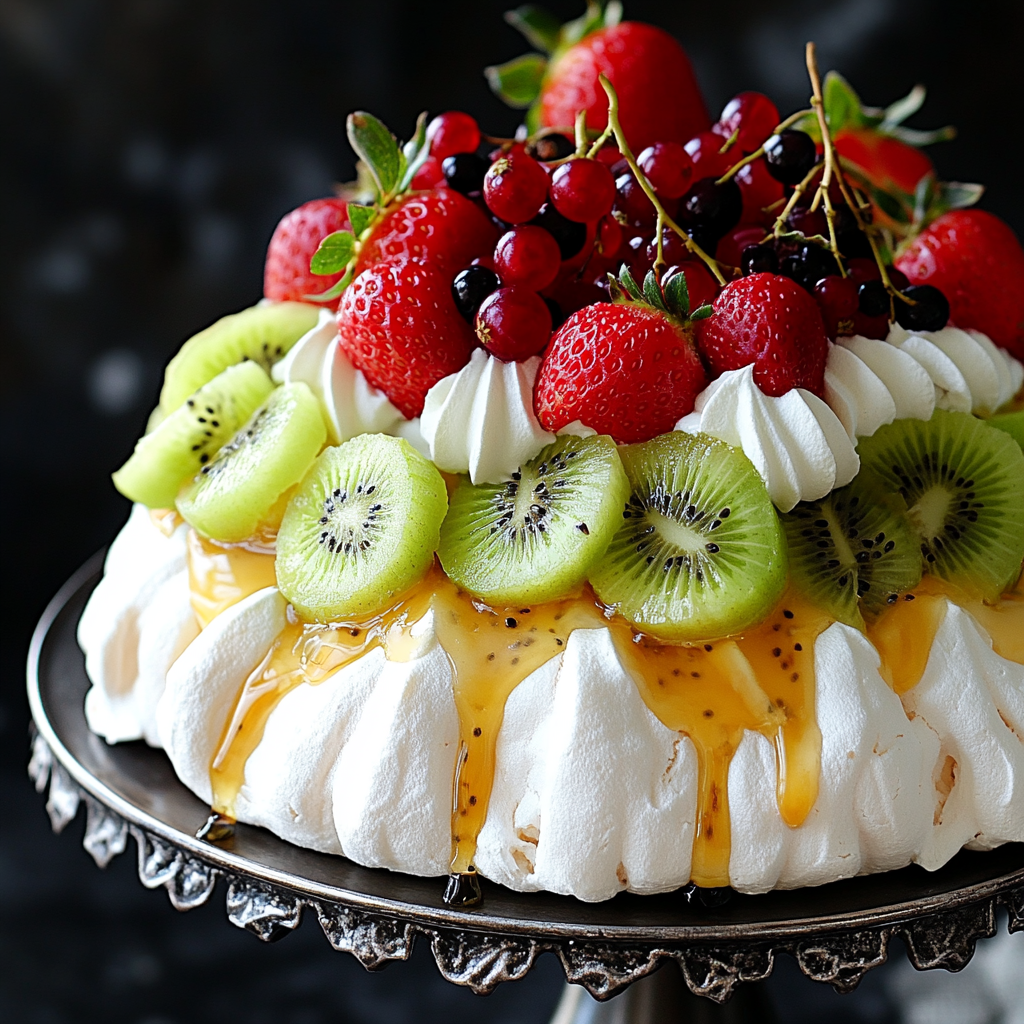
Storing Your Pavlova: Keep It Crisp & Dreamy
Once baked and cooled, store the unadorned pavlova in an airtight container in a dry, draft-free place for up to two days. Never refrigerate the meringue base, as moisture will make it weep and lose its crispness.
Only add the whipped cream and fruit toppings just before serving to keep the shell from softening too quickly. If you have leftovers, store them in the fridge and enjoy within a day — the meringue will soften but still taste delightful.
Whip up this Perfect Pavlova Recipe to impress your guests with a dessert that’s as stunning as it is scrumptious.

Pavlova Recipe
Ingredients
Classic Pavlova Base
- 1½ tbsp cornstarch 15–17 g
- 225 g egg whites at room temperature (approx. 7 large eggs)
- 2 tsp white vinegar 10 mL or 1 tsp cream of tartar (5 g)
- 370 g caster sugar or granulated sugar finely pulsed (1¾ cups)
- 1 tsp grated lemon zest optional
To Serve the Pavlova
- 1 cup halved strawberries or more, as preferred
- 2 tsp vanilla extract
- 1½ cup whipping cream 35% fat
- 2 kiwi fruits peeled and diced or sliced
- 50 g caster sugar ¼ cup or 50 g confectioner’s sugar (½ cup)
- 1 cup diced mangoes or other fruits such as blueberries, raspberries, red currants
- ¼ cup passion fruit pulp or syrup or lemon curd
Instructions
- Ensure all utensils and bowls are impeccably clean and dry. Preheat the oven to 275°F (135°C). Line a half-sheet tray with parchment paper and mark a 7.5–8 inch circle on the underside as a guide.
- Separate each egg individually, collecting egg whites in a clean bowl before transferring them to the mixer bowl set on a kitchen scale until reaching approximately 220–225 g. Should any yolk contaminate the whites, discard and start over with a fresh egg. Reserve yolks for another use.
- Confirm that egg whites are at room temperature, ideally around 75°F (24°C). If necessary, gently warm them by setting the bowl over a larger bowl of hot tap water for 1–2 minutes while stirring until they reach 85–90°F (29–32°C).
- Attach the whisk to the stand mixer and begin whipping the egg whites on medium-low speed (speed 2–3) until soft peaks form—this typically requires 5–10 minutes. Gradually introduce the sugar, adding one spoonful at a time every 20–30 seconds. Whip for 10–15 seconds between additions, ensuring the sugar integrates thoroughly, and scrape down the sides midway.
- Once all sugar is incorporated, continue whisking at medium speed (speed 4) until the meringue becomes thick, glossy, and free of undissolved sugar—check by rubbing a small sample between fingertips. This stage may take 12–30 minutes.
- Prepare the cornstarch and vinegar (or cream of tartar). When the meringue reaches stiff peaks and the sugar is dissolved, reduce the speed to low to gently mix in the cornstarch and vinegar, then increase slightly for 2–5 minutes to fully combine. If using, fold in the lemon zest by hand.
- Dab a small amount of meringue onto each corner of the tray to secure the parchment paper. Spoon the meringue into the marked circle, piling it high. Smooth and shape with an offset spatula, creating a mound about 2.5–3 inches tall with gently furrowed sides and a shallow depression at the center.
- Place the tray in the oven and immediately lower the temperature to 212°F (100°C). Bake for 80–90 minutes without opening the oven door. After 80 minutes, briefly open the door to check for a dry exterior; extend baking by 10 minutes if necessary. Once done, switch off the oven and allow the pavlova to cool completely inside, ideally overnight.
- Before serving, chill a mixing bowl and whisk the cold whipping cream on medium-low speed until soft peaks form. Incorporate the sugar and vanilla, then continue whisking to semi-stiff peaks. Finish by gently whisking by hand to achieve stiff peaks without over-beating.
- Using a spoon, delicately crack the pavlova’s surface to create room for the cream without collapsing the structure. Spread the whipped cream evenly over the top. Adorn with strawberries, kiwi, mangoes, and any other fruits of choice. Drizzle with passion fruit pulp or lemon curd for an added burst of tang.
- Serve immediately for the most delightful texture contrast.

